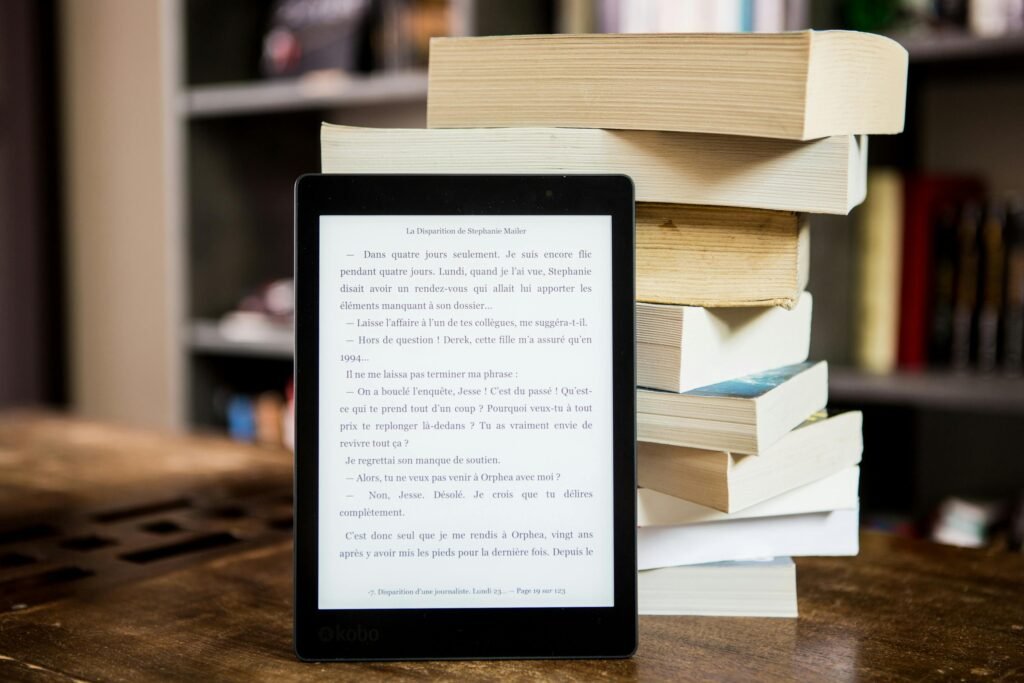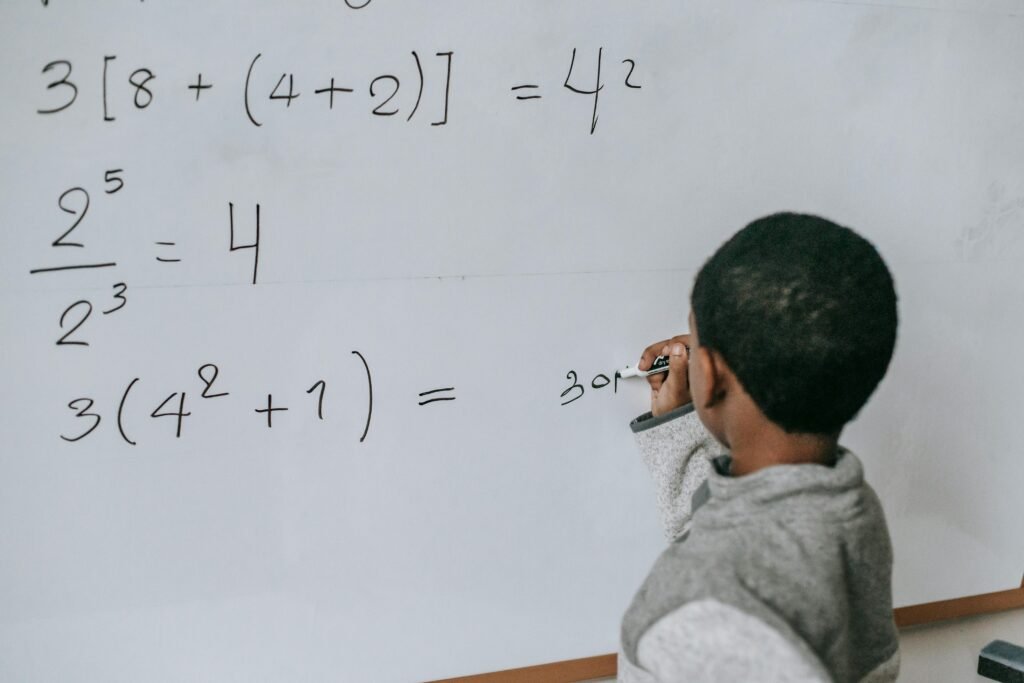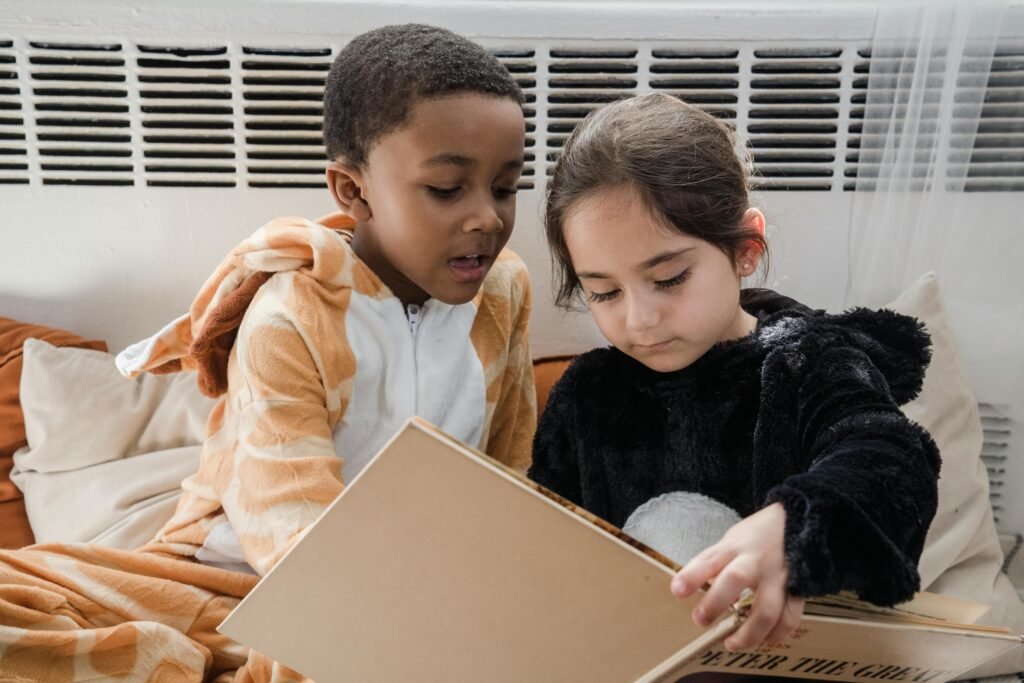E-books are everywhere. Schools, homes, libraries, and even lunchboxes. Kids use tablets to read, study, and learn. It’s fast, easy, and super convenient. But is it helping them learn better—or is it slowing them down? This article dives deep into the real effects of e-books in classrooms. Not just guesses. Real stats. Real stories. Real advice.
65% of students report experiencing eye strain after 30 minutes of reading on a screen
This stat is a big deal. When more than half of students feel eye pain or discomfort after just 30 minutes, it tells us something important—our kids’ eyes are working too hard.
Eye strain happens when the eyes get tired from intense use. Reading from screens is different from reading on paper. Screens flicker, shine light directly into the eyes, and have glare. Kids often forget to blink when staring at a screen, which dries their eyes out. And when they’re reading for school, they usually push through the discomfort just to finish the task.
Over time, this can cause headaches, blurry vision, or even trouble focusing. Some students might not even realize they’re feeling strain—they just think reading is hard.
So what can we do?
First, teach kids the 20-20-20 rule. Every 20 minutes, look at something 20 feet away for 20 seconds. This gives the eyes a quick break and helps prevent strain.
Next, check the screen brightness. If it’s too bright or too dim, it can make reading uncomfortable. Set it to match the light in the room.
Also, adjust the font size. Small fonts make the eyes work harder. A slightly bigger font makes reading smoother and easier.
If possible, switch things up. Let them use printed books for longer reading sessions. Use screens for shorter tasks, like research or interactive activities.
And finally, talk to your kids about how their eyes feel. Ask if reading on a screen hurts or tires them out. If it does, that’s your cue to make a change.
Keeping kids’ eyes healthy means they’ll be able to focus better, read longer, and enjoy learning more.
Students reading printed books score 8% higher in reading comprehension tests compared to those using e-books
This one’s powerful. An 8% boost in test scores just by switching from screens to paper? That’s a big jump.
Reading comprehension is all about understanding what you read—not just recognizing words, but really grasping the meaning behind them. And when students use printed books, they do this better.
Why? It turns out, screens can make our brains work differently. When reading on paper, the brain takes in information more deeply. The eyes can scan the page better. Kids can flip pages, go back and forth, and make notes more easily.
With e-books, it’s harder to jump back a few paragraphs or flip to the end. The reading flow is more “scroll and skim,” which hurts comprehension. Kids may read the same amount but not remember as much.
So how can parents and teachers use this insight?
Start by making paper books a regular part of study time. Use e-books only when necessary or when the content is only available digitally.
If you must use e-books, encourage kids to slow down and reread if something isn’t clear. Remind them they can highlight and take notes, just like with a physical book.
You can also print out parts of the e-book. Even just having a few pages on paper can help with tougher chapters or when studying for a test.
Lastly, try short reading tests at home. Compare how well your child remembers what they read on a screen vs. on paper. Use that insight to guide your choices.
The goal is simple—help your child understand more and remember better. And sometimes, that means going old-school with real paper.
Children aged 8–12 read 20% slower on screens than on paper
Here’s something surprising. Kids in the 8–12 age group, the key middle childhood years, actually read slower when using e-books—about 20% slower, in fact.
Slower reading means it takes longer to finish assignments. It also means kids might lose focus or feel frustrated. This age group is building confidence in reading, and if they feel like it takes too long, they might start to dislike it.
But why is screen reading slower?
Part of it is the way screens work. The eyes have to track moving text, deal with brightness changes, and often swipe or scroll. That breaks reading flow.
Another reason is distractions. Tablets and e-readers sometimes have apps, games, or notifications. Even if those are turned off, kids associate screens with entertainment, not focus. Their brains are wired to expect fun, not deep reading.
So how do we help them speed up and enjoy reading more?
Try giving them more time when reading digitally. Don’t rush them. Let them read at their pace.
Also, use timers to measure how long it takes them to read a passage on paper versus on screen. Help them notice the difference, so they become more aware of their pace.
Use focus tools. If your device allows it, turn off all apps except the reading app. Go full-screen to hide distractions.
And always balance screen time with real book time. If they read one chapter on a screen, let the next be on paper. This keeps their pace and interest strong.
It’s not about banning screens. It’s about making sure they don’t slow our kids down.
72% of teachers say students get distracted more easily when reading digital books
This one hits hard, especially for teachers and parents trying to keep kids focused.
Most teachers—almost three out of four—notice that kids lose focus faster when reading on screens. Why? Because screens invite distractions.
Even if the e-book app is clean, the device itself is tempting. Kids might think of games they’ve played, notifications that might pop up, or just the fun of swiping and tapping. Their brains are trained to expect fast, fun things on screens—not quiet, focused reading.
So when it’s time to read an e-book, their minds wander. They skim instead of diving deep. They read words but don’t always understand them.
So what can we do?
First, build reading routines. Let screen reading happen in quiet, distraction-free times. No music, no noise, no multitasking.
Next, talk about attention. Ask your child if they find it harder to focus on digital reading. Just helping them notice it can make a big difference.
Try limiting screen reading to shorter texts. Use paper for long chapters or test prep.
And finally, create a reading space. A calm corner without toys or noise. Whether it’s digital or print, the space around them can help set the tone.
The key is simple—help kids stay focused, one page at a time.
85% of students feel more tired after reading on a screen for over an hour
That’s a huge number. Almost every student feels more tired after an hour of screen reading. It’s not just their eyes—it’s their brains too.
Reading on screens requires more focus. The constant light, the scrolling, the changes in color and movement—it all adds up. The brain works harder to filter out what’s important. That’s why students feel mentally drained after a long reading session on a device.
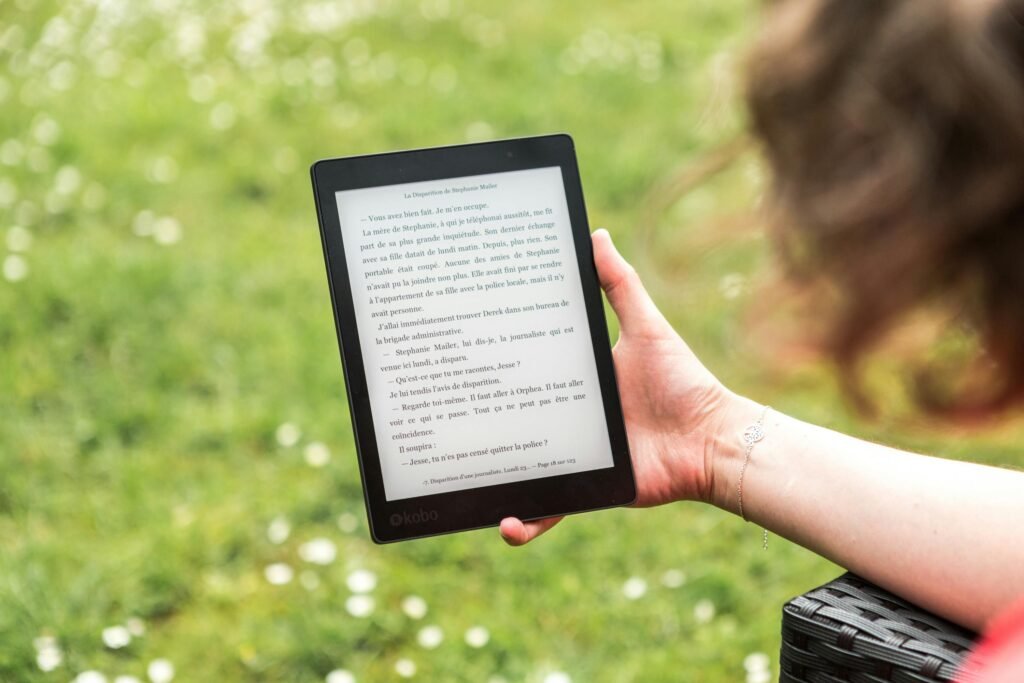
And when they’re tired, they stop learning. They forget more. They get grumpy. They might even avoid reading altogether.
So how do we fight digital fatigue?
Break up screen reading. Use timers to stop every 20–30 minutes. Let them rest their eyes, stretch, or do something hands-on.
Hydration helps too. Keep water nearby. Dehydration can make screen fatigue worse.
Adjust the reading schedule. Avoid screen reading at the end of the day when the brain is already tired.
And mix it up with different formats—read some pages, then watch a short related video, then come back to reading.
Remember, the goal is to help kids feel fresh and focused. If the screen is draining them, we need to change the way we use it.
Frequent e-book use is linked to a 32% increase in complaints of dry eyes among students
Dry eyes don’t just make kids uncomfortable—they also slow down learning. When students use e-books regularly, they’re 32% more likely to complain about dry eyes. That’s not just a small problem. It affects focus, comfort, and even how much they enjoy reading.
Dry eyes happen when we don’t blink enough. And guess what? We blink way less when we’re staring at screens. The eyes dry out, feel scratchy or watery, and that makes reading harder and less enjoyable. It can also make kids rub their eyes, which brings in germs and leads to even more problems.
You may notice your child squinting, blinking fast, or rubbing their eyes often. These are signs of digital eye strain, and dry eyes are a big part of that.
So what can you do?
One simple fix is encouraging blinking. It sounds silly, but just reminding kids to blink more when reading on screens can really help. Turn it into a game—ask them to blink every time they turn a virtual page.
You can also set up reading environments that reduce screen glare. Use soft lighting and avoid reading under harsh overhead lights. Lower the screen brightness just enough to be comfortable, and increase the font size to avoid squinting.
Another tip—use artificial tears or eye drops if dryness becomes frequent. But only after talking to your doctor or eye specialist.
And don’t forget to schedule regular screen breaks. Give those eyes a rest.
Dry eyes may sound small, but they’re a big signal from the body. Listen to them, and your child’s reading will improve—on and off the screen.
40% of students can focus longer when reading printed materials than digital ones
Focus is the magic ingredient in learning. Without it, even the best books and lessons fall flat. And the truth is, 40% of students say they can focus longer when reading printed books than when using screens.
That’s almost half of all kids saying, “I do better with paper.”
This matters a lot in school settings, where focus leads to understanding, and understanding leads to better scores and smarter thinking.
When kids read printed books, they’re not battling screen glare or fighting the urge to tap away. They’re more grounded, more engaged, and less likely to wander off mentally. Their brains treat print as “serious” reading and digital as “casual” reading. That’s how they’ve grown up.
So how do we help kids boost focus in this screen-filled world?
First, know your child. If you notice they drift off easily while reading on a tablet, let them try the printed version. See if it helps.
Set up reading habits that include both formats. Maybe they read print for homework and use e-books for short stories or fun reads. This helps them balance both worlds.
Also, get rid of digital noise. Turn off notifications, put devices in airplane mode, and avoid apps that distract. If possible, use dedicated e-readers instead of tablets.
And try focus training. Set timers and create “reading sprints” where they read for 10–15 minutes with no breaks. Gradually increase the time as their focus grows.
The key is helping kids build attention stamina. Paper books give them a head start.
Students using e-books for study read an average of 6 pages less per session than those using print
This stat may not sound huge at first. Just 6 pages? But think about it—if a student reads 6 fewer pages every day, that’s 30 fewer pages a week. Over a month, that’s more than 100 pages. That’s entire chapters missed.
Why do students read fewer pages on screens?
One reason is mental fatigue. Screens make the brain work harder to decode words, especially over time. So students tire out faster and stop sooner.
Another reason is reading flow. With print, it’s easy to flip ahead, skim back, or hold a page to think. On screens, that’s harder. Kids may feel “stuck” in a scrolling loop, which makes them lose motivation to keep going.
So how can you help your child read more, even with digital books?
Set reading goals based on content, not time. Instead of “read for 20 minutes,” say “read two full chapters” or “finish this section.”
Help them build reading endurance by mixing formats. For longer study sessions, switch from screen to print midway.
Also, encourage them to use note-taking while reading. When kids write down what they’re learning, they stay engaged longer—even when reading digitally.
And talk about reading. Ask questions like “What happened in this chapter?” or “What do you think the character will do next?” This gets them thinking deeply and encourages them to keep going.
Reading less means learning less. So let’s help students stay on track, no matter the format.
In low-light classrooms, screen reading can reduce reading accuracy by 11%
Lighting matters more than we think. In low-light classrooms—or even bedrooms where kids read before bed—screens may seem like a helpful tool. But they come with a hidden cost.
Reading on a screen in poor lighting can drop reading accuracy by 11%. That means students make more mistakes, misunderstand words, or skip lines altogether.
Why does this happen? In dark rooms, the screen glows too brightly in contrast with the background. This makes the eyes strain harder to keep up. The text might look fuzzy or too sharp. And the brain starts to miss important details.
This isn’t just about grades. It’s about the confidence that comes from reading well. If a child keeps making mistakes, they may feel like they’re “bad at reading”—even if they’re not.
So what can you do to help?
First, check the lighting. Make sure your child reads in a well-lit space. Use warm, soft lights instead of harsh white bulbs. Desk lamps with adjustable brightness work great.
Second, use night mode or dark mode if reading in a dim room. This reduces the contrast between screen and background, which helps the eyes relax.
If your child prefers reading in bed, get them a soft clip-on reading light. Even when using a tablet, this helps balance the lighting around them.
And always ask how their eyes feel after reading. If they mention headaches or blurry vision, that’s your cue to adjust the environment.
A small lighting change can bring big reading results.
Screen glare increases eye fatigue by up to 45% during prolonged e-book use
Let’s talk about glare—that shiny reflection on the screen that shows everything except the words you’re trying to read. Glare isn’t just annoying. It actually increases eye fatigue by up to 45%.
That’s almost half again as much strain just because of the screen reflection.
Eye fatigue makes reading harder. Students blink less, squint more, and start to lose focus. It’s like running with a rock in your shoe—possible, but painful and distracting.
Glare often comes from windows, overhead lights, or bright rooms. And it can happen on any screen—tablets, Chromebooks, phones, you name it.
So how do we fight glare?
First, change the angle. Tilt the screen or move your child to a different seat to avoid direct light.
Second, adjust the brightness. Too bright makes the glare worse. Too dim and the screen gets hard to read. Aim for the middle ground.
Third, try anti-glare screen protectors. These are simple stick-on covers that reduce reflection and make screens easier to read.
You can also close blinds or curtains during reading time to reduce natural light glare.
And remind kids to take breaks. Even five minutes away from the screen every half hour can reduce eye fatigue a lot.
When the glare goes down, focus goes up.
Students using printed books retain information 14% better after one week
This is one of those stats that makes you stop and think. A 14% improvement in memory after one week? That’s not a small gain—that’s a whole letter grade in many cases.
Retention is the ability to remember what you’ve learned. It’s the difference between just reading a paragraph and being able to explain it to someone else a few days later.
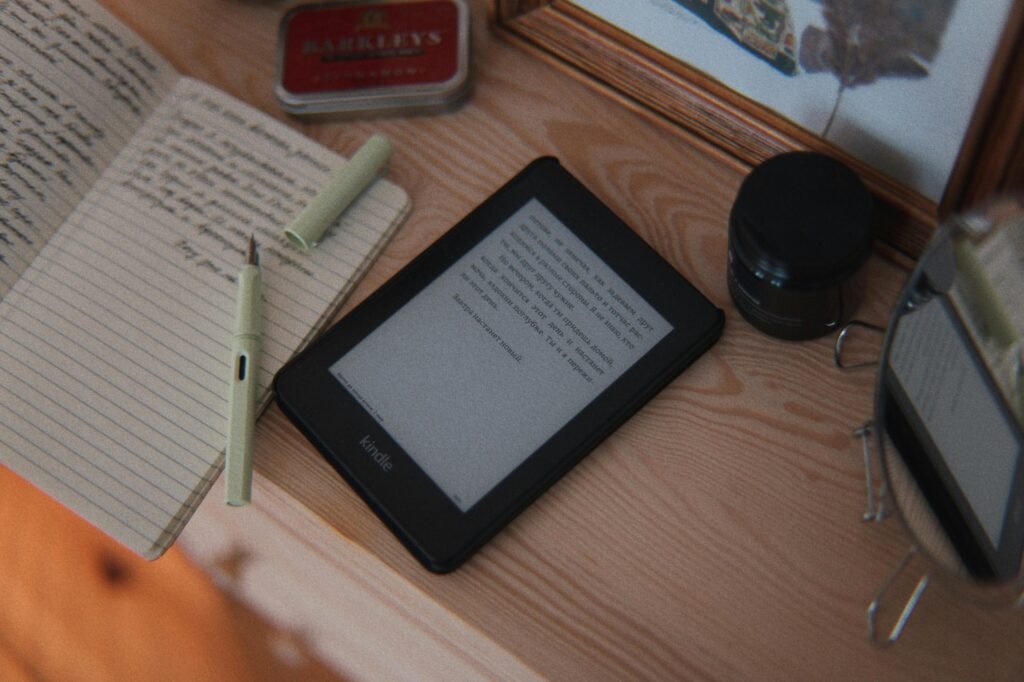
When kids use printed books, their brains process the information more deeply. They can see the layout of the page. They can feel where they are in the book. These little physical cues help anchor information in their minds.
E-books, by contrast, are flat and uniform. Every page looks the same. There’s no physical progress to feel. No page corners to flip. This makes it harder for the brain to build memory connections.
So how can you help your child remember more from screen reading?
One way is to combine digital reading with active review. After a chapter, ask your child to tell you what they remember. Or have them write a few sentences about what they just read.
Another strategy is dual-format learning. Let them read on the screen, then review the same material in print or by discussing it out loud. This reinforces the information from multiple angles.
You can also teach kids to create mental snapshots—imagining the screen or the text in their head after reading. This little trick trains the brain to hold onto details longer.
And don’t forget repetition. Have them reread key sections a few days later. Repetition builds memory—and memory builds confidence.
If print helps them remember better, don’t ignore that. Use it as a superpower for studying and long-term learning.
Digital readers blink 50% less than normal, contributing to eye dryness
Blinking is one of those things we all do without thinking. But it turns out, we blink half as often when we read from screens. And that causes a chain reaction—dry eyes, discomfort, and trouble concentrating.
When we blink, we refresh our eyes. We spread natural tears across the surface. That keeps vision clear and eyes healthy. But with screens, our brain goes into “hyperfocus.” It forgets to blink. Especially in kids.
This makes the eyes dry out fast. It also causes blurry vision, stinging, and that itchy feeling that kids hate. Some may even think their eyesight is getting worse, when really—it’s just dry eyes.
So what can you do about it?
Teach your child to blink more often. Make it fun. Tell them, “Blink like a frog” or “Blink every time you finish a paragraph.” You can even set a blinking reminder every 10 minutes.
Keep eye drops on hand if dryness is frequent. Ask your doctor which type is best for your child’s age.
Also, reduce screen time when possible. Give their eyes breaks between reading sessions.
And make the screen comfortable. Adjust the height so they’re not looking up or down too much. Reduce brightness and remove glare.
Sometimes, the smallest habit—like blinking—can make the biggest difference in reading comfort.
62% of students say they remember more from physical books than from e-books
This stat says it loud and clear: students trust paper. More than half believe they remember better when reading from physical books. And that belief matters.
When students feel confident in how they’re learning, they do better. Their brains relax, and they trust their memory more. That alone can boost performance.
Why do students feel this way?
With printed books, they can touch, hold, and see the progress. They can underline, use sticky notes, and even smell the pages. It’s a full sensory experience—and that builds stronger brain connections.
Screens feel less personal. The content disappears with a tap. And it’s harder to remember “where” in the book something happened.
So how can you use this insight?
Ask your child which they prefer. If they say paper helps them remember more, support that. Get library books or print out key pages from e-books.
Help them mark up the pages. Use color pens, sticky flags, or little drawings to help them lock in key ideas.
If they must use e-books, use tools like highlighting and note-taking. Many e-readers have these features built in. Teach them to use bookmarks to find their way back.
Also, talk about what they’re reading. A short conversation can help move information from short-term to long-term memory.
At the end of the day, it’s about using the format that helps them feel—and learn—their best.
Average reading speed drops by 10–15 words per minute when reading from a tablet
Speed isn’t everything—but when it comes to reading, it does matter. If a child reads slower, they cover less material. And if they’re already struggling, that delay can lower their confidence even more.
When kids use tablets, their reading speed drops by about 10–15 words per minute. That may not sound like much, but over a 30-minute session, that’s hundreds of words missed.
Why is screen reading slower?
It could be the scrolling. It could be screen flicker or eye strain. Or it could be the mental habit of skimming on screens. We’re used to browsing quickly, not reading deeply.
So what can help?
First, teach reading strategies that work well on screens. Ask them to pause at the end of each paragraph and check for understanding.
Increase font size so they don’t have to squint or lean in. Use serif fonts if available—some studies say they’re easier to read for longer texts.
Help them track their pace. Use reading trackers or tools that show how many pages they’ve finished. Set reading goals by chapter, not just time.
Also, reduce distractions. Even small things—like a music playlist or background noise—can slow kids down more than you think.
Speed up reading by slowing down distractions. That’s the trick.
Screen reading leads to a 25% increase in reading regressions (rereading lines)
Reading regressions happen when a reader goes back and rereads the same line or sentence over and over again. It’s like taking two steps forward, one step back.
This might not seem like a big deal, but over time, it breaks reading flow. It also frustrates kids and makes them feel like they’re not good readers.
With screen reading, regressions go up by 25%. That’s because digital pages don’t give as many visual cues. The eyes lose track of where they are. And if a child’s already tired or distracted, they’ll start rereading without even noticing.
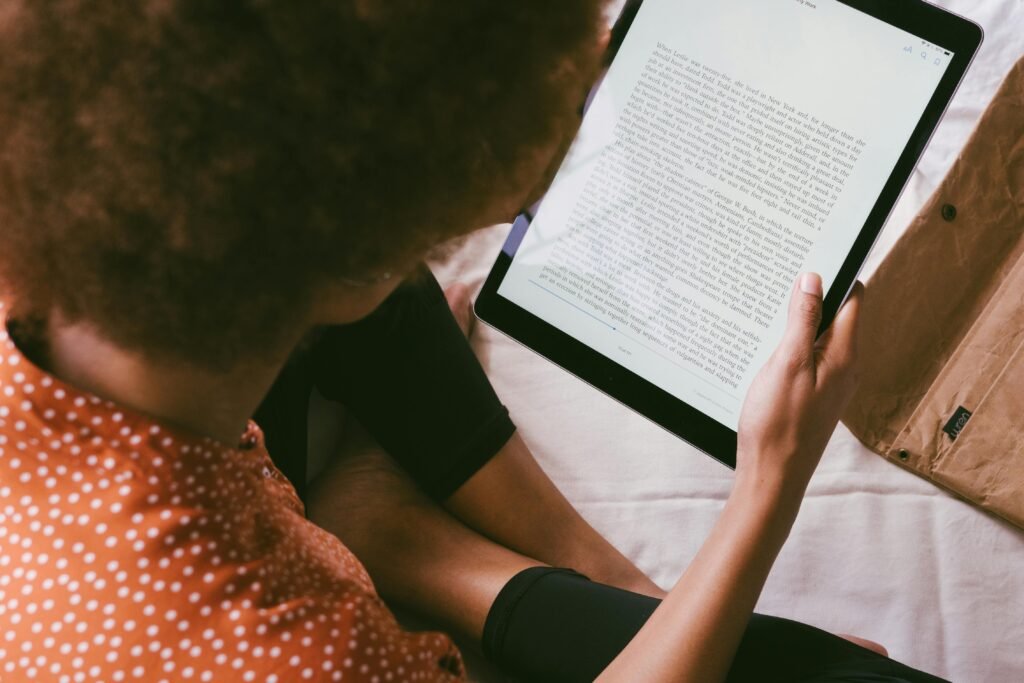
So what’s the fix?
First, increase line spacing on the screen. More white space helps guide the eyes. Some e-readers allow you to adjust spacing and margins.
Next, use a finger or stylus to track the words. This old-school trick works even better on screens. It gives the eyes an anchor.
Avoid scrolling texts for long reading sessions. Use paginated views (where one screen equals one “page”) so the eyes don’t get lost.
Help kids pause and summarize each paragraph. This reduces the need to go back because they’ve already locked in the meaning.
And finally, if regressions are frequent, switch to print for a while. Let them build confidence, then come back to digital.
Sometimes the brain just needs a simpler map.
Blue light from screens can reduce melatonin production by 23%, affecting student sleep
Sleep is fuel for the brain. Without good rest, kids struggle to focus, remember, and think clearly. And guess what? The blue light from screens—even just an hour of reading before bed—can cut melatonin levels by 23%. That’s the hormone that tells the brain it’s bedtime.
Melatonin is like nature’s sleep switch. When it gets dark, melatonin rises. But if a child is reading on a glowing screen at night, that light tricks the brain into thinking it’s still daytime. So melatonin drops, and bedtime gets delayed. Even if they fall asleep, it might not be deep or restful.
This matters even more during school days when kids need to wake up early and be sharp. Poor sleep affects mood, memory, and even how well they perform in class.
So how do we fix it?
First, try switching to paper books in the evening. Save screen reading for earlier in the day. This protects sleep time and helps the brain wind down naturally.
If screen reading at night is a must, turn on night mode or use blue light filters. These features reduce the harsh blue glow. Some tablets even have settings that auto-adjust based on the time of day.
Create a “no-screens-before-bed” rule. Set a tech-free time at least 30 minutes before bedtime to help melatonin rise.
Encourage relaxing bedtime habits. Soft music, gentle stretching, or reading together with a physical book can help kids ease into sleep more naturally.
Protecting sleep means protecting their brain. And that starts with managing light.
Students who read on paper complete reading tasks 12% faster
Time is precious—especially for busy students with homework, classes, and activities. That’s why this stat matters: students reading on paper finish tasks 12% faster than those using screens.
Twelve percent might not sound like much, but over a week, that’s hours saved. And in school, it could mean finishing an exam on time or having more time to review before a test.
Why does paper help speed things up?
It’s partly because of fewer distractions. No pop-ups. No battery warnings. No games calling out. Just a book and the brain.
Also, paper makes scanning and flipping easier. Kids can quickly go back to check something or skim ahead to get the big picture.
With screens, those same actions take longer. Scrolling, loading, tapping—they all slow the flow. Plus, screen reading requires more brain power, which tires kids out faster.
So how can you use this info?
Let kids do time-sensitive reading—like assignments or studying—with printed materials. Use e-books for lighter, less urgent reading.
Show them how to track their time. Set a timer and let them see how fast they read a page on paper versus on screen. This can help them understand their own pace and build smarter habits.
Also, consider printing out key study materials from digital textbooks. Even just having the hard copy for practice questions can boost speed and confidence.
Faster reading doesn’t mean rushing—it means making learning smoother. And print can give kids that edge.
Middle schoolers who read digitally score 6 points lower in comprehension tests
Middle school is a critical time for building reading and thinking skills. So when kids using digital reading tools score 6 points lower on comprehension tests, we have to pay attention.
That six-point drop could be the difference between a B and a C. It could mean a student who normally does well suddenly starts falling behind.
Comprehension is about more than just finishing a book. It’s about making sense of it. Understanding characters, picking up themes, remembering facts. And when reading digitally, many students struggle with this deeper level of learning.
Why?
Part of it is surface reading. On screens, kids are more likely to skim. They scroll fast, skip paragraphs, or jump around without really taking it in. They also get tired faster and may not go back to re-read if they miss something.
To help, start by slowing things down. Encourage students to take their time with digital reading, just like they would with a paper test.
Teach note-taking—even digitally. Show them how to use the highlight feature or type short notes in the margins.
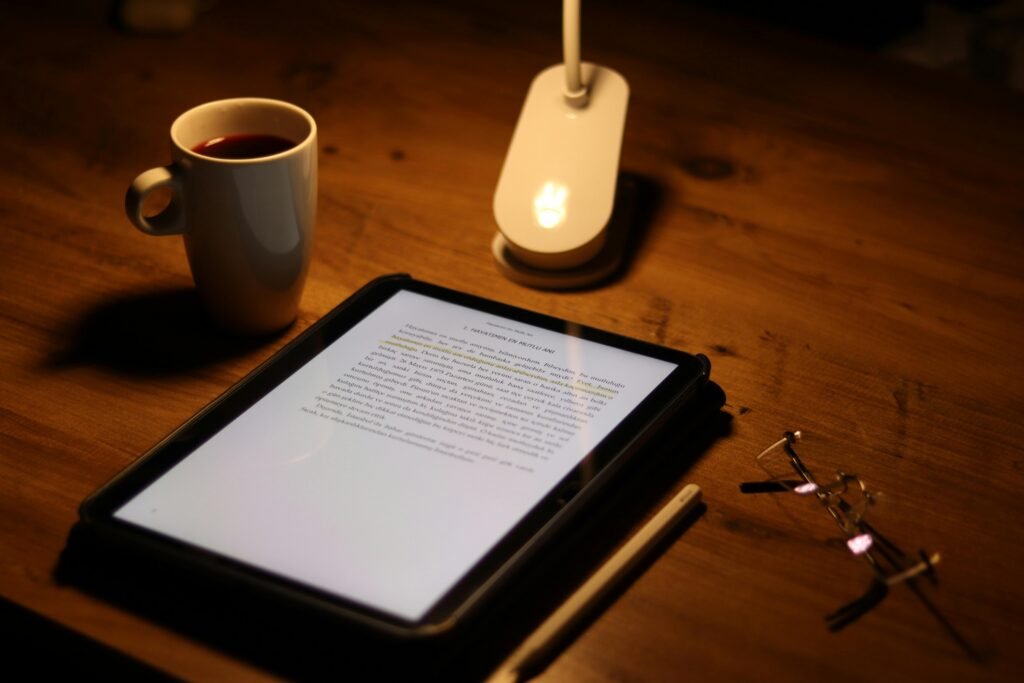
Have them explain what they read out loud after each section. This builds both memory and comprehension.
When possible, provide the option to read important content on paper. This includes test prep materials, study guides, or comprehension-heavy chapters.
Make reading about thinking, not just finishing. That’s how comprehension grows.
Students with more than 2 hours of screen reading a day report 38% more headaches
Headaches in kids are more common than we think, especially with screens now being part of daily schoolwork. Students who read on screens for over two hours a day are 38% more likely to report headaches. That’s a big jump—and it’s a sign something’s not right.
Why do screens cause headaches?
They create eye strain, especially when kids don’t blink or sit too close. The light flicker, small fonts, and glare can all make the eyes work harder. That tension travels up to the head, leading to pressure or full-blown pain.
Add in poor posture, and it gets worse. Many kids hunch over tablets or read with their neck bent for long periods. This creates tension headaches and shoulder pain too.
So how can we prevent screen-related headaches?
Start with the setup. Make sure screens are at eye level and about an arm’s length away. Use a stand or a stack of books to lift tablets if needed.
Encourage regular breaks. The 20-20-20 rule (every 20 minutes, look at something 20 feet away for 20 seconds) helps relax eye muscles.
Increase font size to reduce squinting. Also, turn on dark mode or blue light filters to make reading easier on the eyes.
Pay attention to posture. Check in every 15–20 minutes. Are they slouching? Is their neck bent? Small adjustments can prevent big problems.
And of course, if headaches become frequent, check in with your child’s doctor or optometrist. Sometimes, a simple change in habits or glasses prescription can make a big difference.
91% of college students say they concentrate better with physical textbooks
This stat is loud and clear—when students get older and take learning into their own hands, they overwhelmingly choose print. In fact, 91% of college students say they focus better with physical textbooks.
That tells us a lot. These are students who’ve grown up with screens. They’ve used them for everything. But when it’s time to learn deeply, they still prefer the feel of a book in their hands.
Why? Print makes it easier to zone in. There are fewer distractions. No alerts or scrolling. Just the text. The brain locks in, and attention sticks.
With e-books, focus tends to flicker. Even the small act of tapping to turn pages can break concentration. Over time, that wears on students and makes learning harder.
So how can younger students build the same habit?
Start by making paper books feel special. Create reading time with a cozy spot, a cup of water or snack, and no digital devices in sight.
Let them choose their own books. Ownership boosts attention. If they picked it, they’ll want to stick with it.
Also, model focused reading. Sit with them and read your own book. Kids copy what they see.
For schoolwork, print out important sections—even if they came from a digital textbook. A printed worksheet or chapter can go a long way in helping students build focus.
Remember, focus is a skill. And physical books can be the best tool to sharpen it.
Only 23% of students prefer e-books over print for long reading sessions
Long reading sessions—like studying for exams, reading novels, or preparing for presentations—demand deep focus. Yet only 23% of students say they prefer e-books for these kinds of sessions. That means more than three out of four would rather use printed books.
Why such a strong preference?
Long reading on screens can be tiring. Eyes get sore. Minds wander. Pages blur together. Kids often say they can’t “get into” the story or material when it’s digital. With print, it’s easier to track progress, use bookmarks, and stay engaged.
Also, the physical act of turning pages gives the brain a break. That small motion helps maintain attention, especially during long sessions.
So how can you support your child during extended reading periods?
First, stock up on physical books when possible—textbooks, library books, and even printed PDFs. Offer paper as the default for long study times.
Next, create a dedicated reading routine. Choose a calm time each day when your child tackles longer reading. Make sure it’s screen-free and interruption-free.
Track their reading mood. After digital sessions, ask how they felt—tired, bored, or frustrated? Compare that to how they feel after print reading. Let their own experience guide the format they choose.
Also, break up long readings into chunks. Give breaks in between chapters or pages, especially when using screens. This keeps their brain fresh and eyes rested.
At the end of the day, the best reading is the one that actually gets read—and print still wins for the long haul.
Students exposed to heavy e-book reading show a 17% decrease in visual endurance
Visual endurance is like stamina for the eyes. It’s the ability to keep reading without getting tired. And in students who spend a lot of time reading e-books, that endurance drops by 17%.
This shows up in small but important ways—kids might start rubbing their eyes, skipping lines, or needing more breaks than usual. They may say their “eyes feel tired” even after short sessions.
Why does this happen?
Screens are visually demanding. The light, contrast, and flicker all add up. And without frequent breaks, the eye muscles don’t get a chance to recover. That leads to fatigue—and over time, a drop in endurance.
How can you rebuild visual strength?
First, use shorter sessions. If your child’s visual endurance is weak, don’t force them through a full hour of digital reading. Start with 10–15 minutes and build up slowly.
Use tools to reduce screen strain. Font size, contrast settings, and anti-glare screens can make a big difference.
Encourage paper reading as an eye-friendly alternative. Let their eyes “train” with print to build stamina.
You can also try vision exercises. Ask your eye doctor about simple activities that strengthen eye muscles and focus skills.
Visual endurance takes time to develop, just like any muscle. Treat the eyes with care, and they’ll get stronger.
Font size manipulation in e-books can improve reading speed by 12%, but not comprehension
One cool feature of e-books is the ability to change font size. Bigger fonts help kids read faster—up to 12% faster, in fact. But here’s the catch: comprehension doesn’t improve along with speed.
This means kids might move through the text quicker, but they don’t always understand more.
Why is that?
Large fonts make each word easier to see. That’s great for quick reading. But comprehension depends on more than speed. It takes focus, memory, and time to think about what’s being read.
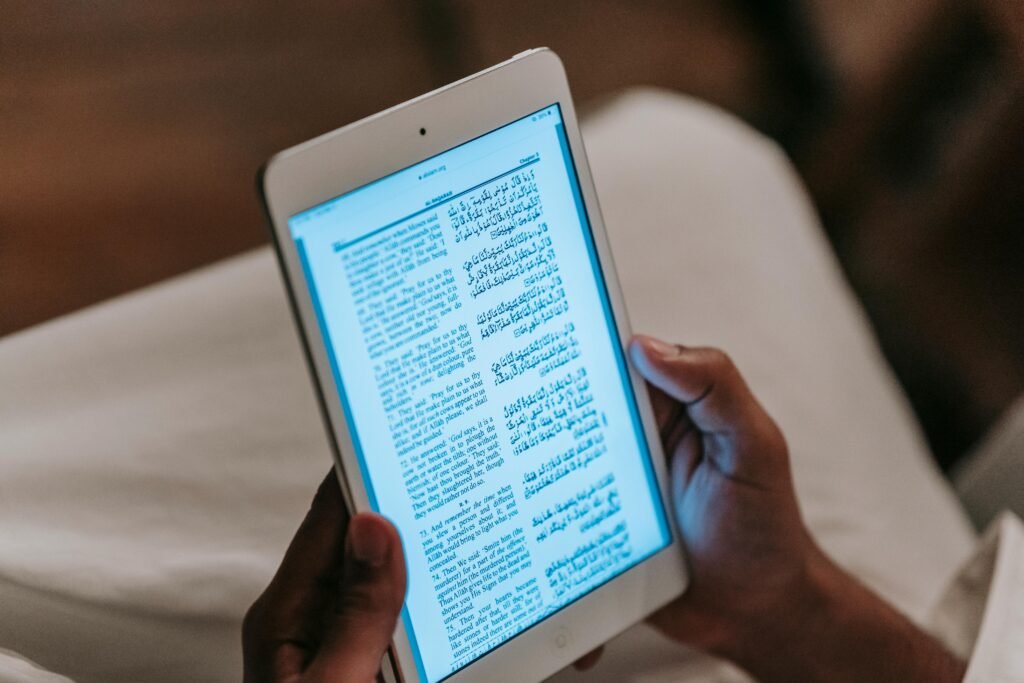
So how can we use font size to our advantage?
First, adjust the font to match your child’s needs. If they struggle with small print, go bigger—but not so big that it turns reading into a scroll-fest. Aim for balance.
Use larger fonts for first reads—when they’re just getting familiar with the content. Then switch to standard size when reviewing or studying.
Encourage note-taking. Even if they’re reading faster, stopping to write a few key points helps build understanding.
Use reading checkpoints. After every few paragraphs, ask questions or have them summarize. This helps slow the brain down and absorb more meaning.
Remember, speed is only useful if it helps the brain keep up. Big fonts help the eyes—but we still need to guide the brain.
Children who read e-books before bed take 16 minutes longer to fall asleep
Reading before bed is one of the best habits for kids—but when they use screens instead of paper, they stay awake longer. On average, 16 extra minutes to fall asleep.
That’s a big deal. Over time, this delay can steal hours of rest each week. And tired kids don’t just yawn—they struggle to learn, focus, and behave during the day.
Why does screen reading delay sleep?
It’s all about light. Screens glow with blue light, which tells the brain, “Stay awake!” Even a short bedtime story on a tablet can send the wrong signal to the brain’s sleep clock.
Also, the stimulation of tapping, scrolling, and interacting with a device keeps the brain active instead of winding down.
Here’s how to create better sleep-time reading routines:
Make paper books the bedtime default. Keep a few favorites by the bed. Let your child choose which one to read each night.
If they love e-books, read them earlier in the day. Save bedtime for physical books or audiobooks.
Keep lights dim during evening reading. Warm lamps or soft nightlights work best to signal it’s time to rest.
Establish a screen-off rule 30–60 minutes before bed. That break from blue light gives melatonin time to rise, helping your child fall asleep faster and sleep deeper.
Sleep is learning’s best friend. Protect it—and watch your child thrive.
Eye strain from screen reading can reduce visual sharpness temporarily by 20%
Have you ever seen your child squint or blink hard after screen time? That might be temporary vision loss. When kids read too long on screens, their visual sharpness can drop by 20%. That means blurrier vision, harder focusing, and slower reading.
This isn’t permanent, but it’s a warning sign. It means their eyes are overworked. It also means reading becomes harder—just when they need it to be easier.
This sharpness drop happens because of poor blinking, dryness, and the constant refocusing needed on screens. It’s like running without rest—the muscles tire out.
So what’s the fix?
Use the 20-20-20 rule. Every 20 minutes, look at something 20 feet away for 20 seconds. This gives the eyes a break and sharpness a chance to recover.
Make sure screen brightness isn’t too high. Use auto-brightness or adjust it manually based on the room lighting.
Use screen filters that soften blue light and reduce glare.
Encourage hydration. Yes—drinking water helps keep the eyes moist and clear.
And finally, schedule eye-friendly activities. Mix reading with drawing, building, or playing outside. Give those eyes a break from screen time so they can come back stronger.
Temporary blur today can turn into vision issues tomorrow—unless we make simple changes now.
Students using print read 30% more pages in 45 minutes than those using screens
Imagine two kids reading side by side—one with a printed book, one with a tablet. At the end of 45 minutes, the print reader has read 30% more pages.
That’s not just speed. That’s efficiency. And it means more learning, more exposure to ideas, and more progress in less time.
Why are print readers covering more ground?
They’re not distracted by apps or screen fatigue. Their eyes move smoothly across the page. They can flip back and forth quickly, skim or reread with ease.
Digital reading slows things down. Scrolling, tapping, eye strain, and minor frustrations pile up—and progress slows.
So how can we help students read more?
Use printed books for reading time. Make that the go-to format for homework, test prep, or reading logs.
Set goals by pages, not minutes. “Read 15 pages” is often more motivating than “read for 20 minutes”—and with print, it’s easier to track.
Help your child notice the difference. Let them compare how much they read in print vs. digital. Awareness leads to better choices.
Reading more pages means building more knowledge. And sometimes, that just means choosing paper.
Teachers observe a 19% increase in reading engagement when using physical books
Teachers see it firsthand: when students read printed books, they show more interest, more focus, and more energy. In fact, there’s a 19% boost in engagement when paper books are used instead of digital ones.
Why does paper engage more?
Printed books are tactile. Kids can feel the cover, turn the pages, underline with real pens, and use bookmarks or sticky notes. That hands-on interaction helps them connect with the content.
Also, physical books don’t distract. No notifications. No screen settings to adjust. Just pure reading. That calm focus space makes it easier for students to get into the “reading zone.”
So how can you help boost engagement?
Let kids pick their own books from the library or bookstore. When they choose the book, they’re more invested in it.
Create a physical reading nook at home—just a comfy corner with real books and no screens. Make it a daily routine, even for 10–15 minutes.
In school, ask teachers if physical copies are available for assigned reading. If not, offer to print chapters if that helps your child stay focused.
The more kids enjoy reading, the more they’ll do it. And print books are still the best way to make that connection stick.
Reading on a backlit screen for more than 45 minutes increases eye muscle strain by 28%
Eye muscles work just like any other muscles in the body. Use them too long without rest, and they get sore. When kids read on backlit screens (like tablets or phones) for more than 45 minutes straight, their eye muscles experience 28% more strain.
That means more squinting, slower reading, and less visual control. Kids might even start losing their place or skipping lines because their eyes can’t keep up.
Backlit screens are particularly harsh because they shine light directly into the eyes. Over time, this creates tension in the muscles that control focus and movement.
What can you do?
Break reading sessions into chunks. Never let long reading go beyond 45 minutes without a break. Ideally, 30-minute sessions with 5-minute breaks are best.
Encourage reading in good lighting. A well-lit room reduces contrast and eases eye tension.
When using screens, tilt the device slightly downward. Looking slightly down (instead of straight ahead or up) puts less strain on the eyes.
Also, consider e-readers with non-backlit screens, like Kindle Paperwhite. These are designed for long reading and are much gentler on the eyes.
When the eyes are relaxed, the brain can do its best work.
High school students using only e-books for study perform 7% lower on final exams
Final exams are where everything comes together. And here’s the worrying part: high school students who rely only on e-books score 7% lower on average.
That drop might not seem huge, but it’s the difference between passing and failing for some kids—or between getting into their dream school and missing out.
Why the lower scores?
E-books make it harder to annotate deeply, go back to earlier material, and absorb complex information. Many students don’t take digital notes or don’t review the content multiple times.
On paper, students interact differently. They write notes in the margins, draw diagrams, and underline key ideas. These actions help with memory and understanding.
So how can we fix this?
Encourage blended learning. Let them read digitally if needed, but always pair it with paper-based notes, diagrams, or study sheets.
Print out key chapters, quizzes, or summaries. Use those to quiz them before the exam.
Teach active reading habits. Whether digital or paper, students should highlight, summarize, and question as they go. Passive reading leads to forgetfulness—active reading leads to real knowledge.
If your child is preparing for an important test, lean toward print whenever possible. Their grades—and their confidence—may depend on it.
Students reading print are 2x more likely to re-read content for better understanding
Let’s end with one of the most powerful habits in learning: re-reading. Students who use print are twice as likely to go back and re-read sections. That’s huge—because understanding often happens the second time, not the first.
Screens don’t invite re-reading. Scrolling makes it harder to return to a previous paragraph. Many kids just skip ahead or give up.
But with print, re-reading is natural. You can flip back, scan quickly, or even put a sticky note on a tricky spot. It feels easy and low-pressure.
And here’s the magic: re-reading is when deep learning happens. It’s when kids notice details, ask questions, and connect ideas.
So how can you build this habit?
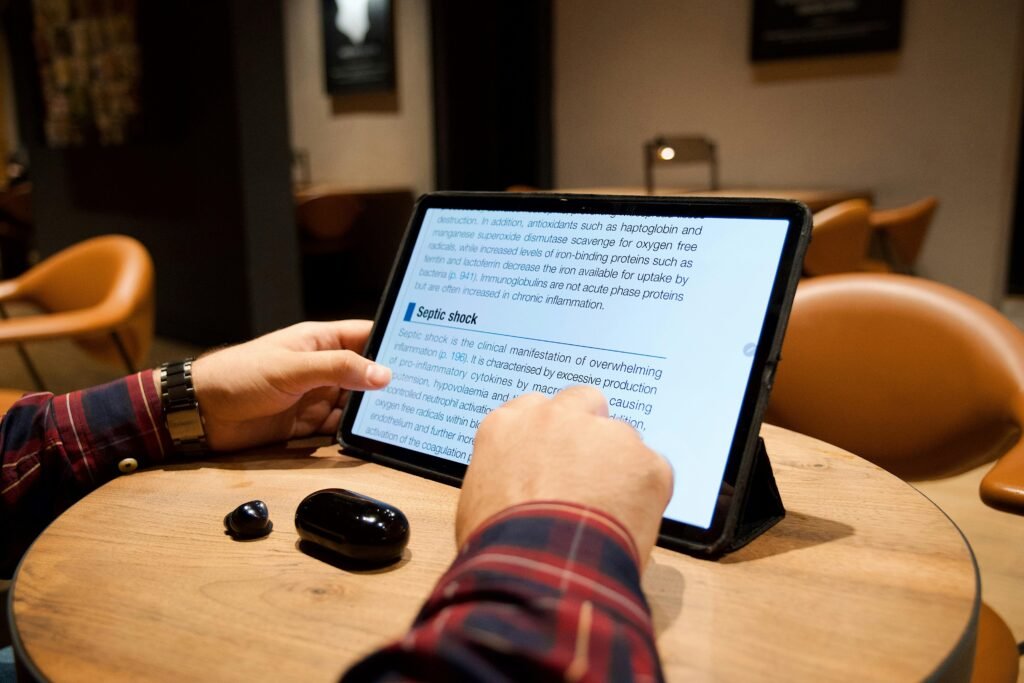
Encourage paper reading during learning time. Show your child how to mark sections they want to review later.
Make re-reading a routine. After finishing a chapter, have them go back and skim it again—this time looking for new meanings or things they missed.
Ask reflection questions. “What did you find confusing?” or “Was there a part you want to read again?” This encourages a natural return to the text.
Even just a 5-minute re-read can make a big difference in understanding and retention.
Learning isn’t just about going fast—it’s about going deep. And re-reading opens that door.
Conclusion
We live in a digital world. Screens are here to stay, and they offer incredible opportunities for learning. But when it comes to reading—real, deep, focused reading—print still holds a powerful edge.
From better scores to healthier eyes, from stronger focus to deeper memory, the stats are clear. Printed books give kids the best chance to grow not just as students, but as thinkers, readers, and confident learners.
